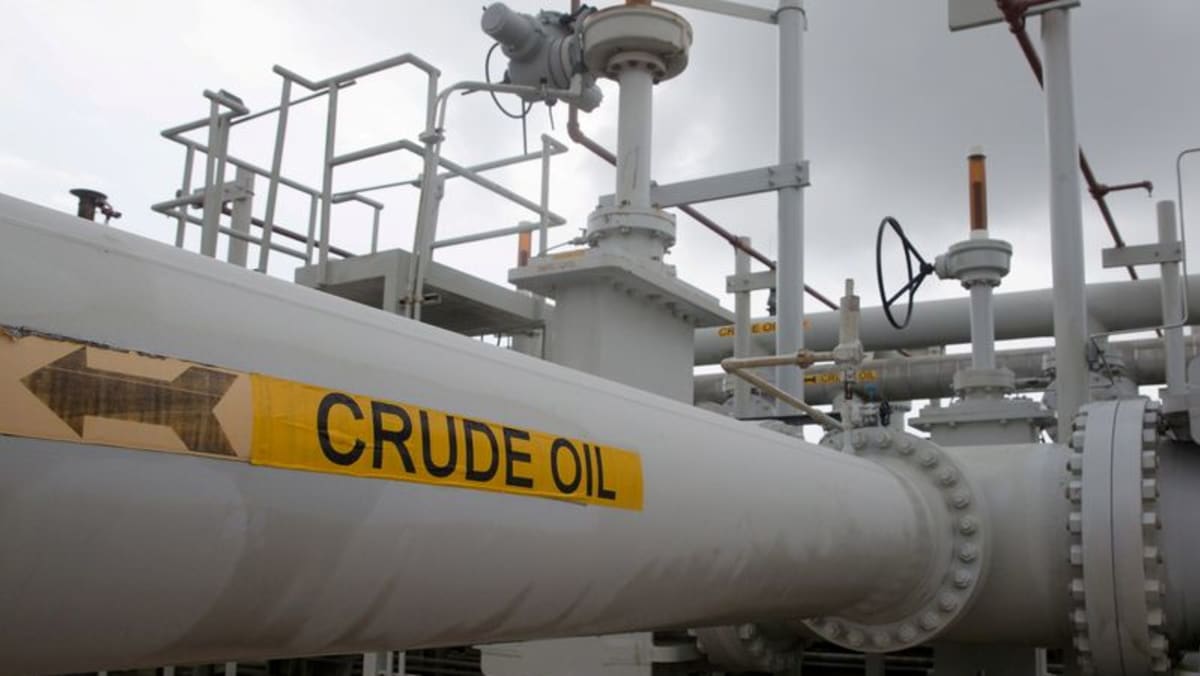Explainer-What is the SPR, the emergency oil stash Biden may tap?
WASHINGTON : The Biden administration is considering tapping the U.S. Strategic Petroleum Reserve (SPR) to cool oil prices in conjunction with other big consumers like China and Japan.
Such a move may not have a long-term impact on dampening U.S. oil prices that hit a seven-year high above US$85 a barrel in late October, analysts say.
Releasing oil could allow the Biden administration to fendoff criticism ahead of the 2022 midterm elections that it hasdone little to counter rising prices. By moving in tandem withother big consumers like China and Japan, it could also allow Biden to say he took action after Saudi Arabia and Russia, members of the OPEC+ production group, resisted U.S. calls topump more oil into global markets.
Here are the issues surrounding using the SPR.
WHY WAS THE SPR CREATED?
The United States created the SPR in 1975 after the Arab oil embargo spiked gasoline prices and damaged the U.S. economy. Presidents have tapped the stockpile to calm oil markets duringwar or when hurricanes hit oil infrastructure along the U.S.Gulf of Mexico.
HOW MUCH OIL DOES THE SPR HOLD?
The reserve currently holds about 606 million barrels indozens of caverns in four heavily guarded locations on the Louisiana and Texas coasts. That’s enough oil to meet U.S.demand for more than a month.
The country also maintains small heating oil and gasolinereserves in the U.S. Northeast.
WHAT OTHER COUNTRIES HAVE STRATEGIC RESERVES?
Besides the United States, the other 29 member countries in the International Energy Agency (IEA), including the United Kingdom, Germany, Japan and Australia, are required to hold oil in emergency reserves equivalent to 90 days of net oil imports. Japan has one of the largest reserves after China and the United States.
China, an associate member of the IEA and the world’s second-leading oil consumer, created its SPR 15 years ago and held its first oil reserve auction in September. Another IEA associate member, India, the third-biggest oil importer and consumer, also maintains a reserve.
Overall, OECD governments held more than 1.5 billion barrels of crude as of September, according to the IEA. That is about 15 days of global demand prior to the pandemic.
CAN THOSE COUNTRIES RELEASE OIL ALL AT ONCE?
U.S. presidents can coordinate a SPR release with drawdowns in reserves by other IEA members at the same time. A potential release involving China and India would be the first instance in which the U.S. coordinated a release that included those two nations.
HOW DOES THE SPR GET OIL TO MARKET?
Because of its location near big U.S. refining orpetrochemical centers, the SPR can ship as much as 4.4 million barrels per day. It can take only 13 days from a presidential decision for the first oil to enter the U.S. market, accordingto the Energy Department.
Under a sale, the Energy Department usually holds an online auction in which energy companies bid on the oil. Under a swap, oil companies take crude but are required to return it, plusinterest.
U.S. presidents have authorized emergency sales from the SPRthree times, most recently in 2011 during a war in OPEC memberLibya. Sales also took place during the Gulf War in 1991 andafter Hurricane Katrina in 2005.
Oil swaps have taken place more frequently, with the last exchange held in September after Hurricane Ida.
WHAT IS THE IEA’S ROLE IN NATIONAL SPRs?
The IEA helps coordinate member releases, provides data on levels and plays other roles.
There are typically three ways to maintain SPR levels to meet the 90-day requirement, according to the IEA website: commercial stocks held by refiners, those held by the government and agency stocks, with countries choosing which balance to maintain. The stockholding structure is peer-reviewed every five years among members.
Measures to restrain demand or otherwise help supply can also be taken, the IEA says. These may include calls for voluntary fuel savings, fuel-switching such as oil to gas for power generation or “surge production” to quickly tap underground reserves.
Relaxing environmental standards can also help make supplies more flexible, the IEA says.
(Reporting by Timothy Gardner in Washington; Additional reporting by Aaron Sheldrick in Tokyo; Editing by Lisa Shumaker)
For all the latest business News Click Here

